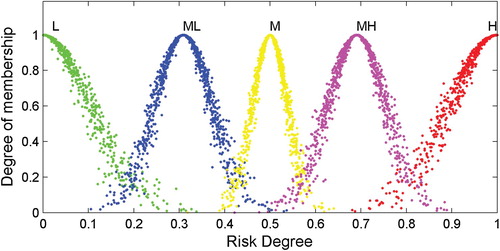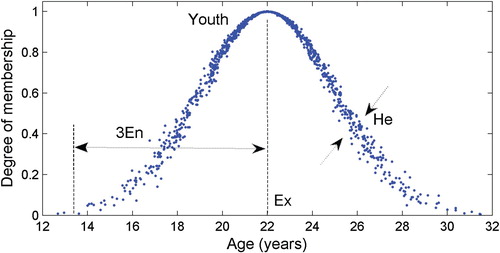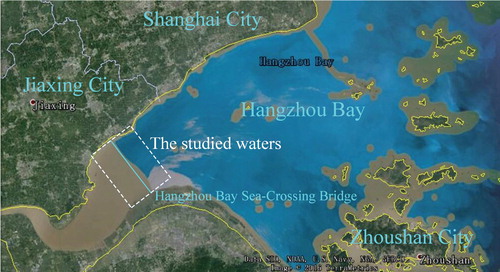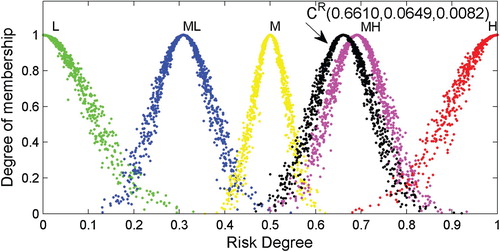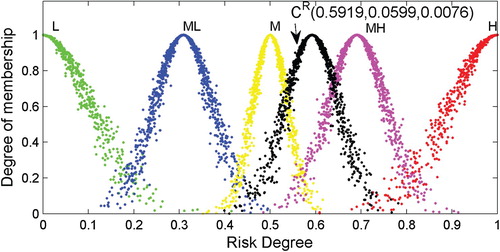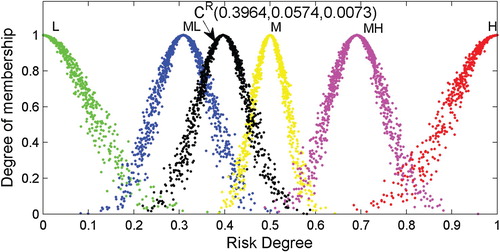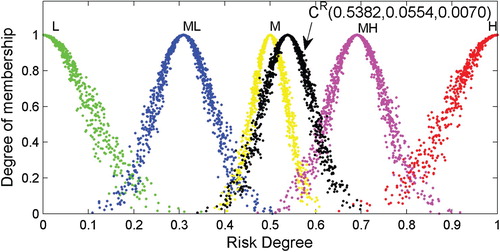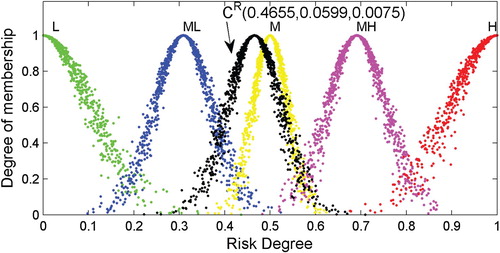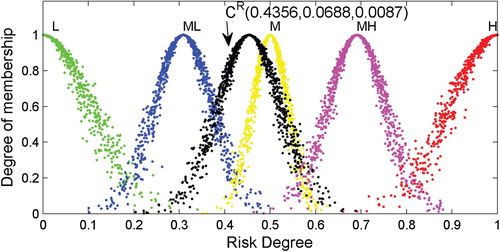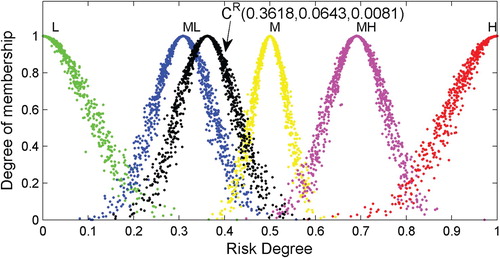Figures & data
Figure 2. Cloud generators (left: the forward cloud generator; right: the backward cloud generator).

Table 1. Relationship between linguistic and numerical variables.
Table 2. The golden section based algorithm for calculating the parameters of five benchmark RCMs.
Figure 3. Reference scale: appearances of benchmark RCMs corresponding to the five linguistic terms.
